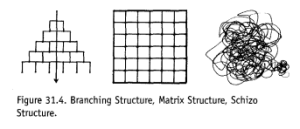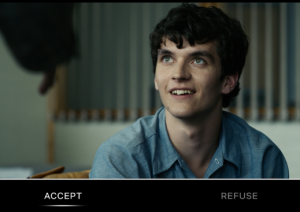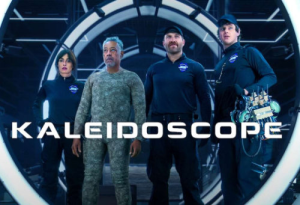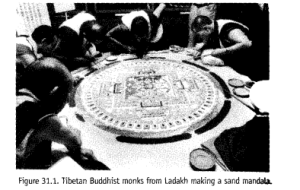Category: Uncategorized
‘joie de vivre’ – final video
Lyndsey – Video Essay
Lyndsey – HTML Cinema
Rylan Eisenhauer DTC491 Final Project Rough Cut
This is a chose your own adventure style work that is hosted on the platform YouTube. it is a 12 video experience but only 8 have been made for the rough cut. There will be 5 endings but currently only 1 is available in the rough cut, all “Option Unavailable” sections are for the 4 other endings that still need to be created.
The techniques from the class I utilize in this project are “networked video”, “montage” (during the Italics video), and “looped video” (not featured in the rough cut and will be one of the endings)
https://youtu.be/FZvfTiKl47s
I hope you enjoy this work as I am excited to finish it up!
Gebhart Emma HTML Assignment
Carrick – Blog Post 8 (Bandersnatch)
Bill Viola’s early vision of data space in his 1982 essay, “Will There Be Condominiums in Data Space?”, feels prophetic when viewed alongside Netflix’s Bandersnatch (2018). Both explore nonlinear storytelling, but they differ profoundly in depth, intention, and future potential.
Bandersnatch, a choose-your-own-adventure film, initially captures the thrill of interaction. The viewer controls Stefan’s fate, choosing between cereal brands and whether to murder his father. But this structure, while novel, quickly becomes repetitive. Its “branching” format—Viola’s own term—offers variation without true exploration. It’s a high-tech illusion of control. There’s a reason why this format of storytelling exploded for a few years and then quickly vanished.
Viola critiques this kind of logic trap. While interactive media promises new forms of engagement, he warns: “Even though the technology is interactive, this is still the same old linear logic system in a new bottle.” He urges us toward more immersive models like matrices and mental architecture—spaces where we navigate ideas, not just outcomes.
His sacred inspirations—Japanese shamanic rituals, the Greek memory palace, Eastern visual symbolism—suggest a more profound engagement with narrative. For Viola, digital storytelling should be holistic and internal, like navigating a dream. Bandersnatch, by contrast, remains procedural—a flowchart disguised as freedom.
Despite its limitations, Bandersnatch still hints at what’s possible. Viola imagined “the viewer wandering through some three-dimensional, possibly life-sized field of prerecorded or simulated scenes.” We’re not far off with VR and immersive media. New technology that is still found to be early in its possibilities. But to fulfill that promise, creators must go beyond branching logic and return to storytelling that mirrors consciousness—fluid, recursive, even spiritual.
As Viola puts it, “Applications of tools are only reflections of the users.” If we approach new tech without curiosity or care—treating it like just another gimmick—we’ll keep getting the same recycled experiences. We’ll end up with more soulless AI content clogging our feeds, or another yearly FIFA that barely pretends to evolve.
That’s what Viola warned against when he asked if we’re just building “condominiums in data space.” We take tools that could reshape storytelling, and instead use them to pump out the digital equivalent of fast food.
But it doesn’t have to be that way. Viola believed in the power of merging ancient structures—like memory temples or spiritual diagrams—with modern tools to make something deeper. Something lasting.
HTML Cinema
Lyndsey – AI Cinema
Rylan Eisenhauer DTC491 HTML Video Project
https://dtc-wsuv.org/reisenhauer24/cinema/
Rylan Eisenhauer Plog Post #9 “Final Project Idea”
I have thought for a while on what I would like to do for my final project and I want to do something somewhat experimental and share where the inspiration came from.
The two modules I will be using for this video project are networked video on YouTube and Looped video.
My idea for my final project is to make a “choose your own adventure” using the networked video platform YouTube of what would be a screen recording of a Google doc as a man is trying to write a love letter. The interactivity aspect will be that the audience can choose to help or mess with the guy’s writing by changing the font, the color, deleting his work, and more by using the mouse. I will also be utilizing loops in order to convey longer extended time and even reputation to show a back and forth or fighting between the text and the mouse. I want the man to speak to the audience specifically through typing to “speak” to the audience by typing “you better stop that! its very frustrating!” The audience will be able to “communicate” by being almost a “silent character” only able to convey what it is doing using the mouse doing actions like pointing, moving around the screen, and things like that.
The endings I have in mind for now are a good ending where the audience helps the guy and things are happy, a bad where they guy gets fed up and just leaves the audience to watch the blank empty doc as the mouse just moves around in a loop, and many another where they get in a fight of control over the mouse to also use some loops.
I am still working to figure out how many videos will be encompassed in this video, but I want it to feel engaging, have a sense of comedy to it and use music to help convey the emotionality and tone of the work. The inspiration for this idea is similar to the “Animation Vs Animator” series but instead of an animation or stick figure, its just the mouse and text that appears on screen. It will be less “cinematic” and wont be as advanced, but I think there is a fun story that I can tell with this medium and utilizing interactivity with it would be lots of fun.
Rylan Eisenhauer Blog Post #8 “Bill Viola”
Bill Viola give a pretty close speculation of the more creative reorganization of presenting film we have been seeing in today’s society. He relates ideas of our own self development through self reflection similarly to how we may turn to the film we capture and rethink its purpose or arrangement. The greatest connection he drives is “Today, development of self must precede development of the technology or we will go nowhere—there will be condominiums in data space (it has already begun with cable TV)”(Viola pg. 14). And in the case of Bandersnatch taking the idea of a choose your own adventure with the intention of finding multiple paths and routes to explore, it itself is a reflection of the condominiums in how we can change the approach we take to engaging in observing and consuming film.

The way we structure our films are important as it will ensure audiences has a comfortable and entertaining experience so they can have as many take always as possible. This is what leads us to favor the approach of very linear storytelling as its easiest to consume and present information. However, in cases like Bandersnatch and other choose your own adventure stories, it almost makes the goal or message of the film to encourage the non linearity and loops as a reflection of the very choices we make seeming more impactful when we know the array of choices we could witness. We have been at odds with how we can present these ideas without audiences feeling too taken aback or confused as stated “artists know that there must be more out there than this. Even though the technology is interactive, this is still the same old linear logic system in a new bottle”(Viola pg 11)

Bandersnatch is similar to this as although it encourages going back and forward to find other routes, thats still linearly moving forward and back. Only rarely do we see a flashback of his childhood and it being primed so that the audiences is guided to that instance and put right back where they left off. It is for this reason I still find Bandersnatch entertaining rather than tedious from a viewer perspective. But that doesn’t mean I still think that linearity is the only way we can or should go about creating film works. Its for this very reason I give praise to Kaleidoscope on Netflix as its whole purpose is to an arrange a random order for people to view and then experience to find out the big picture. Its like putting a puzzle together, there isn’t a correct place to start, you just slowly start connecting ideas until you get the full picture.

I believe that aiming towards more creative ways of compiling footage and unique storytelling is a direction we are headed that can point to new possibilities for viewers. But as of right now we are in a place of worrying that if we embrace too much interactivity and non linearity, we are at risk of viewers being overwhelmed with choice and thinking that the ideas presented are to disjointed. Not to mention with attention spans getting lower and lower overtime, if things aren’t interesting or apparent right off the bat, people will just lose interest. We as people still crave structure and organization, thus “visual diagrams of data structures already being used to
describe the patterns of information on the computer video disc. The most common one is called “branching,” a term borrowed from computer science”(Viola pg. 11). And as we work with film, we know the linearity of time always moving forward, even if you play footage in reverse, the time on the video will still always count forward. We have rules we need to abide by while working to creatively bend them.

Viola also made a point to draw connections to sacred art (as seen above) that works to challenge the simplicity of the choose your own adventure approach as a nonlinear form of storytelling. Within the image shows a Japanese shaman called itako that which calls upon spirits to communicate with them. This form of communication “without the aid of wires or hardware of any sort, have been for ages regularly communicating through time and space with ancestors long gone”(Viola pg. 4). They encouraged the mapping of space in the mind known as “the walk through Hell” to bring spirits along towards familiar paths. Sacred arts like these transport what would be a “viewer” to go across space and time through the mindscape in order to experience something non linearly. The choice of going down the path is so vast in one being to stay right where you are and the other to go what would be to a different world in a single decision.
It is my believe that the technologies we are working with to increase interactivity will become more advanced in time, but we are still in the early day basics. We as a culture are not yet at the place of suspending disbelief as easily if it doesn’t follow the rules we are familiar with (abiding by space and time linearly). But this doesn’t mean we haven’t been trying or working to break this mold. electronic literature writers have been working to create non linear works through key words and multimedia methods of creating experiences that often seem disjointed. If we are able to apply the puzzle framework to viewers to challenge them to witness more thought provoking ideas, we could see the age that advance storytelling methods like these are normalized and can be more personal and investing experiences.
-Rylan Eisenhauer